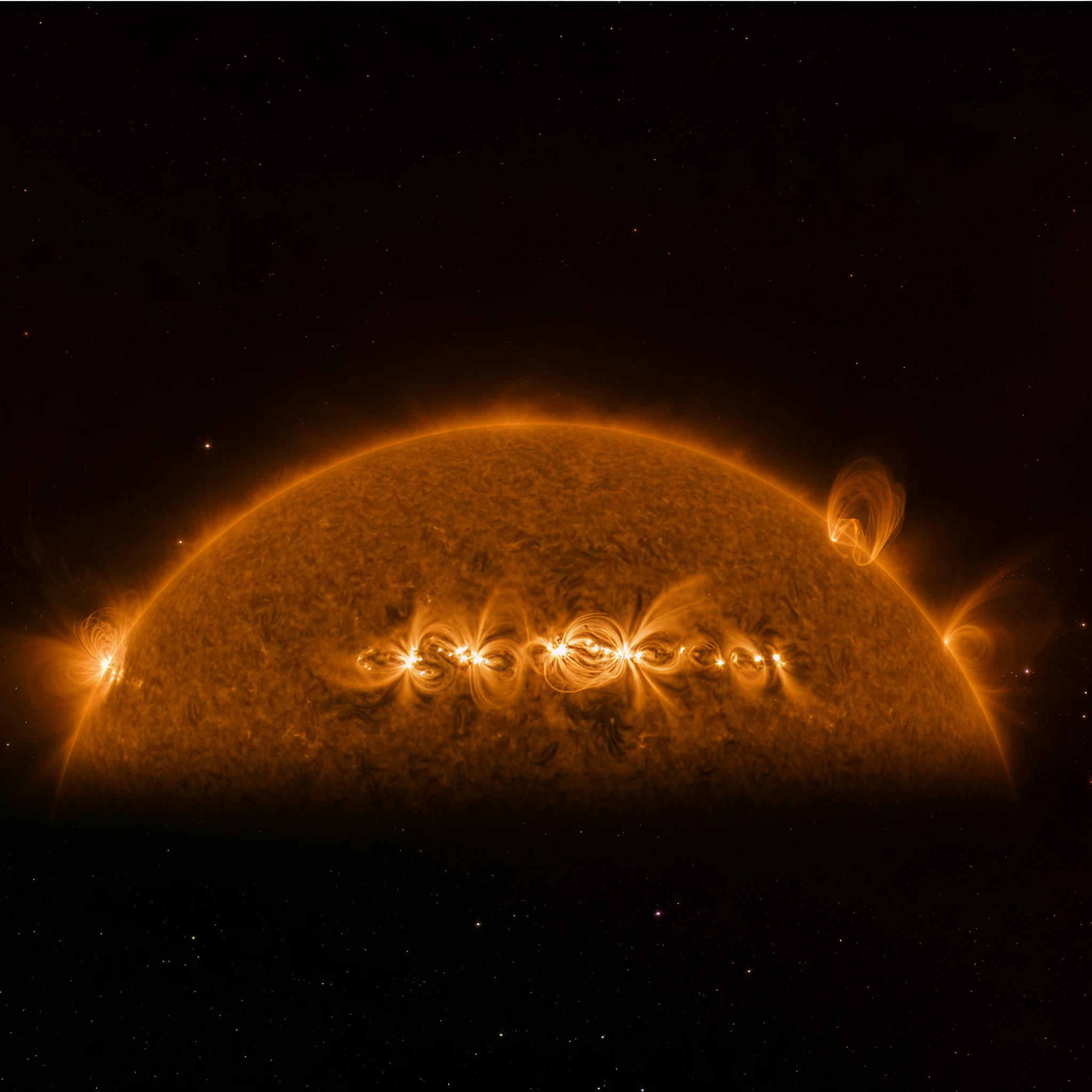One pixel in this image could fit a dozen Earths side by side—that’s how massive the Sun’s newest portrait is. Captured on March 9, 2025, by the European Space Agency’s (ESA) Solar Orbiter with NASA’s support, this groundbreaking ultraviolet mosaic offers unprecedented detail of our star. Spanning an incredible 12,544 x 12,544 pixels, this image is the widest high-resolution photo of the Sun to date.
More than just a visual masterpiece, this photo plays a vital role in advancing our understanding of solar storms and the Sun’s magnetic activity. But what makes this achievement so extraordinary? Let’s take a closer look at the technology and science behind it.
A Closer Look at the Mission
The Solar Orbiter, launched on February 10, 2020, aboard an Atlas V rocket, is a collaborative effort between ESA and NASA. Designed with 10 advanced instruments, the Orbiter aims to gather invaluable data, offering full-disk images, magnetic-field readings, and particle counts, all while enduring solar heat 15 times stronger than what we feel on Earth.
Over its seven-year mission, the Solar Orbiter has steadily moved closer to the Sun, using gravitational assists from Venus to adjust its orbit and bring us closer to understanding the Sun’s enigmatic poles. The spacecraft started its routine science operations in late 2021 and has since captured some of the most detailed observations of the star that powers our solar system.
Behind the Lens of the Widest Solar Image
On March 9, 2025, the Solar Orbiter’s Extreme Ultraviolet Imager snapped 200 individual frames while positioned 48 million miles away from the Sun. Each frame was taken at a wavelength of 17.4 nanometers, allowing scientists to trace plasma at temperatures nearing 1.8 million °F. These frames were then meticulously stitched together into a single mosaic measuring 12,544 x 12,544 pixels.
The mosaic reveals plasma arcs and magnetic loops so detailed that each pixel covers about 185 miles. For perspective, the finished image spans roughly 7,505 pixels across the Sun’s immense 870,000-mile diameter. Such resolution provides stunning clarity in observing the Sun’s fiery surface.
What Does the Image Show?
The image features bright yellow filaments, arcs, and loops of plasma suspended by the Sun’s magnetic field. These striking patterns illustrate the intense magnetic activity that drives solar storms. By zooming into the solar corona (the Sun’s outermost atmosphere), scientists can observe magnetic knots and plasma jets that stretch thousands of miles above the Sun’s surface.
Such observations are not just snapshots of beauty. They provide critical insights into phenomena like why the Sun’s corona is millions of degrees hotter than its surface.

Why This Image Matters
The Sun is more than the source of Earth’s light and warmth; it’s also a dynamic and sometimes unpredictable force that can impact life and technology on our planet. Solar storms, triggered by bursts of charged particles from the Sun, can disrupt satellites, knock out power grids, and require astronauts to retreat to protective modules in space.
By analyzing photos like this one, scientists can better understand the early warning signs of solar storms and trace their origins back to features on the Sun’s surface. These advancements help improve space weather predictions, giving industries and governments precious time to prepare for electromagnetic disruptions that could impact Earth.
Future Implications of This Technology
While this mosaic represents a milestone, it is just the beginning. The Solar Orbiter will continue to move closer to the Sun and eventually achieve higher orbital inclinations for a first-ever sustained view of the star’s poles. This will provide critical insights into the Sun’s 11-year sunspot cycle and the mechanisms behind solar flares.
Interestingly, the Solar Orbiter works in tandem with NASA’s Parker Solar Probe, which directly samples plasma from much closer distances. Together, these missions promise to create the most comprehensive picture yet of the Sun’s magnetic activity and its influence on space weather.
Looking Ahead
The widest high-resolution photo of the Sun captured by the Solar Orbiter is more than an impressive achievement in imaging; it’s a testament to how far collaboration and technological innovation can take us in exploring the mysteries of our universe. Each pixel of this dazzling image holds the promise of breakthroughs—from understanding magnetic loops to refining solar storm forecasts.
The road ahead for solar exploration is bright, and missions like the Solar Orbiter are paving the way for deeper insights into the star that sustains life as we know it. The next time you feel the Sun’s warmth on your skin, remember the incredible science aiming to decode its dynamic energy.








